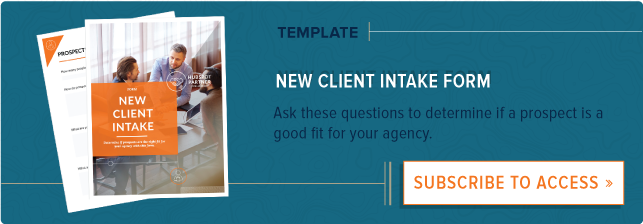

Organizations both large and small are continuously challenged to make the most of their marketing dollars -- do more with less and faster than before. Today’s marketers are tasked with generating demand for their brands, products, and services, and their marketing budgets are being scrutinized and squeezed like never before. Agency spend always ranks high within these tight budgets so improving the agency selection process, which is usually missing or outdated, can yield great returns for companies.
Too often, organizations will centralize work with one agency or use a partner based on historical precedence instead of their ability to best meet the strategic objectives. This may not be a conscious decision since organizations often struggle to identify the level of strategic thinking needed to meet their creative objectives. Matching the right agency with the right creative job is a tougher task than most imagine. And the wrong choice leads to rework, spending inefficiencies, and poor resource utilization.
It doesn’t have to be this way. Common pitfalls can be avoided by adding strategy, structure, and rigor to the agency selection process. But first, you need to identify the current state of your agency selection process: Are you giving all of your work to one agency, regardless of job type? Selecting an agency based on an emotional relationship or historical precedent? Are you dependent on your agency for brand knowledge? Is speed the biggest driver of selection?
Identifying your situation can help you correct the course, and it’s worth the effort. Marrying the right agency to the right creative assignment prompts smarter budget decisions and leads to best in-class market executions.
Common Agency Selection Pitfalls
Organizations can fall into several traps that break or eschew a strong agency selection process.
Sometimes there is a peanut butter approach: spreading all creative design assignments to one agency, from the most strategic brand campaigns to simple packaging edits. This approach is driven by a universal struggle for marketers to do more with less, often looking for efficiencies within their agency spend. However, while marketers may think that they are saving money by bundling all of their creative work to one agency, in reality, very few agencies are suited to meet all of a client’s creative demands.
Organizations have diverse needs, but agency capabilities can be more singular. In a typical calendar year, marketing initiatives can include new product introductions, redesigns, packaging maintenance and claims, marketing campaigns, and promotional materials. Larger initiatives are typically planned annually and have strong visibility throughout the organization; these can be appropriately sourced to your agency of record. Small, one-time, unplanned initiatives challenge this approach as this type of work may not be in the agency’s wheelhouse. For example, how often have you designated quick turnaround work to your strategic agency only to have the assignment languish from timing, cost, and deliverable negotiations? Too often.
Another driver of this one-size fits all approach is speed. You want a creative project done quickly, so you reach out to your trusted strategic agency. While they certainly have the requisite brand knowledge, quick, reactive projects may conflict with their established processes and conventions, making them unable to meet immediate deadlines and fulfill client objectives. Ultimately, you will end up paying additional fees for increased rounds of revisions on a low-level design initiative.
I compared the hourly pricing for a low-level creative assignment between two respected agencies, one strategic and the other more equipped for fast-turnaround work; the latter could save the client 60% of the total cost of project execution.
On the flip side, your single-sourced agencies might be better equipped for fast-turn production than solving for big branding issues. In this case, it’s large strategic initiatives that end up going through multiple rounds of revisions, either because the work lacks strong brand strategy or the creative is off brand strategy and does not deliver against the brand promise. After several rounds of revisions, you may then decide to do an agency search to find another partner with more strategic capabilities. Alternately, you could end up settling for subpar creative, leaving behind a huge opportunity for brand development and business improvement.
Other times, organizations select an agency not because of budget or speed but rather a lack of brand knowledge and confidence. Within many organizations, it’s actually the agency that is the brand steward. They have more tribal brand knowledge than the marketing team, either due to length of brand service or the natural attrition and rotation of marketers. Most marketing cultures build an up-and-out mentality, so often the agencies end up onboarding and training new marketers on brand equities and history. Their brand knowledge becomes invaluable, allowing them to ramp-up quickly to assignments. However, the tradeoff is increased creative fees for their strategic services.
Relationships and historical precedence can also influence suboptimal agency selection. Within most organizations, marketing is the owner of the brand equity, business results, and execution of marketing plans. If there are no tools in place like an agency roster or clear agency roles and responsibilities, work can quickly be awarded based on a marketer’s prior working relationships. This tends to foster a “wild, wild west” mentality to agency management. The number of agencies can quickly multiply, creating little rhyme or reason to agency pricing or project fees.
5 Tips for Matching Creative Work to Agencies
To correct the course, the most effective marketing organizations deploy the below practices to add in process and visibility to agency selection.
1) Classify Creative by Levels of Required Strategic Thinking
Create classifications that link design assignments with the level of strategic thinking. Many organizations use a grading scale (A, B, or C) for the level of design work. The highest grade requires the highest level of strategic thinking. An example would be product innovations. Typically, there is a high level of organizational investment and financial investment in this type of project. Classifying this assignment as an “A” project insures that the organization is investing the right level of dollars to ensure that consumers understand the product benefits and that the design fits into the overall brand architecture.
For the most part, it is easy to discern the most strategic or “A” projects. Where this matrix comes in handy is when you begin to designate your design assignment as B or C projects. Pushing design work down the matrix can help expedite and save money on design adaptations or line extensions. I've seen this kind of framework for creative assignment result in 26% savings within marketing budgets from improved grading of design initiatives.
2) Identify Agency Core Capabilities
After determining the level of strategy needed, it is very important to understand your agencies’ capabilities. This goes beyond just working with your account manager. Ask how the agency has grown or expanded their capabilities over the years. What are their roots? Did they start as an industrial design agency and are now expanding into graphic design? This investigation helps reveal the core expertise.
Beyond agency history, know the creative team who will be working on your account, including their backgrounds and other accounts they support. Evaluate the agency’s body of work, understanding key contributions they make to the creative assignment. For example: Did they simply take the advertising concept and adapt it or did they generate the strategy and creative idea?
After you feel confidently informed about the agency’s history and core competencies, build and create the organization’s agency roster. Make it clear to your brand whom they should work with for different creative assignments.
3) Categorize Brands by Size and Scale
The size and scale of the brand can determine the level of creative and strategic support. How does that translate to creative assignments? Start to think about what common traits or characteristics these brands share. Can you begin to bundle brands that share similar insights or the same consumer landscape or the same shelf? Once you establish this, assess the level of financial support the organization can offer. Are these brands growing, or are they struggling and need to refresh the brand’s identity? Does the brand warrant heavy or light design investment and would the brand benefit and respond?
After you have created a clear picture on how this brand ranks within the organization, you can organize the brands and bundle them by common characteristics. This allows for natural design and process synergies, the ability to partner with right agency, and to actualize cost savings when developing creative statement of works.
4) Create Swim Lanes for Creative Agencies
Provide your agencies with guidelines that distinguish job sharing and responsibilities across marketing initiatives. Blurred lines between agencies will end up causing reworks and delay, which will only increase costs.
A swim lane diagram will document clear ownership and responsibilities for each agency across a project. This is especially critical within “big idea” sessions. For example, if a digital agency proposes leveraging augmented reality to support a marketing campaign, the package design agency should choose how to execute this on the package. Of course, the digital agency may need to be consulted for idea intent, but you need to be strict. Defined boundaries will limit rework and excess agency fees.
5) Develop Adaptive Workflows & Brand Guidelines
Agencies often need to communicate with each other, and you can help facilitate seamless execution.
To do this, document the design workflow and designate when creative hand-offs should happen between agencies. This type of workflow is often referred to as production decoupling.
For help with brand guidelines, ask your lead strategic agency to develop this to ensure consistency with other agencies. Within these guidelines, executional mandates should be clearly stated and outlined, including logo treatment across marketing platforms and approved color palettes, type fonts, and photography styles. This tool will help marketing teams evaluate incoming creative, but more importantly, it will drive brand consistency and communication across multiple agencies.
Increase Agency Efficiency
The successful implementation of the tools outlined above will help your organization match the right agency to the right creative assignment. This deeper understanding around agency selection prompts smarter decisions which leads to less rework, increased efficiencies in spending, and better utilization of internal and external creative resources.




